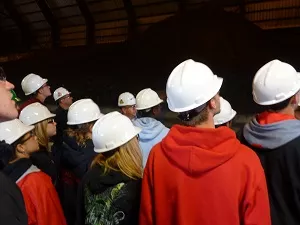
INSTITUTE FOR ENERGY
Energy Services
From our flagship wind resource assessment program and renewable energy assessments to public outreach in classrooms and other venues, the Institute works hard to be a reliable resource for your energy needs. Learn more about our services below and please contact us to discuss how we can assist you.
Renewable Energy & Energy Efficiency Assessments
Let the Institute for Energy assist you in finding ways to improve the efficiency of your home, farm or business and suggest the potential for renewable energy generation.
Agricultural Producers & Small Businesses
The Institute for Energy is currently able to offer farms and businesses FREE resource assessment reports to help you make wise energy decisions. You will be provided with a detailed wind and solar analysis, along with geothermal, hydro and biomass potentials and suggestions for improving energy efficiency. Interested in our assessment program? Contact us by emailing energy@francis.edu or filling out the form below.
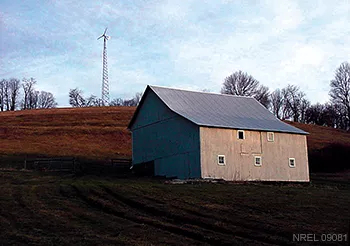
Homeowners
Institute staff have the resources to seek out inefficiencies in your home and make suggestions for improvement and adding renewable energy generation. We can provide a walk through and testing of the home to identify health hazards, energy saving opportunities (including use of infrared technology and blower door equipment), and analysis of electricity usage and needs. Interested in our program? Contact us by emailing energy@francis.edu or filling out the form below for pricing and availability.
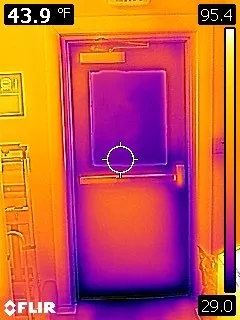

Our assessment services are made possible, in part, thanks to the support of the Penelec Sustainable Energy Fund, the Robert Waters Charitable Trust, and the Community Initiatives Fund, all part of the Community Foundation for the Alleghenies.
Wind Resource Assessment Program
The Institute for Energy's Wind Resource Assessment Program (WRAP) is a first stop for Pennsylvania landowners interested in learning if their site has commercial wind potential. Wind maps and other data analysis tools are available through the Institute to explore wind characteristics at sites throughout the commonwealth. From the early 2000s to 2018, the Institute was also home to Pennsylvania's only anemometer loan program, which conducted onsite wind assessments. Learn more about our maps and equipment, the places we have assessed and an example of a completed project in the tabs below.
-
Our Equipment
Meteorological Towers
Our program utilized 50 and 60 meter tall NRG meteorological (met) towers. Each tower was equipped with anemometers (for measuring wind speed), wind vanes (for measuring direction) and a temperature sensor.
Wind Maps & Data Analysis
Wind speeds vary throughout the course of the year, so understanding averages and other characteristics is critically important to determining if a project will be feasible. The Institute has wind maps depicting the average wind speed available at different heights, which are accessible to the public on our website.
Data Analysis Tools
Software analysis tools are available to Institute staff to help evaluate wind resource data collected from on-site wind measurement instruments.
-
Data We Have Collected
There has been an incredible amount of interest in the Community Wind Project since it was established by the Pennsylvania Department of Environmental Protection in 2005. We've received over 600 applications from nearly every county in Pennsylvania. We have had 12 wind assessment projects in 7 counties and each site has collected a full 12 months of data. See the map below. We know this data is valuable both for project development on-site and also for validation and correlation purposes for other wind projects in the region - and for other research purposes. Contact us for information on our data and how to obtain it.
Community Wind Project Site Assessment Data
Location - Average Wind Speed at 50 m; Wind Power Class (1 to 7)
1) Rockwood, Somerset County - 10.80 mph (1)
2) Boswell, Somerset County - 10.20 mph (1)
3) Portage, Cambria County - 10.20 mph (1)
4) Ebensburg, Cambria County - 13.87 mph (2)
5) Patton, Cambria County - 15.30 mph (3)
6) Greenfield Township, Erie County - 12.70 mph (2)
7) Garret, Somerset County - 12.1 mph (1)
8) Blue Knob, Blair County - 11.95 mph (1)
9) Palmerton, Carbon County - 15.72 mph (3)
10) Freeland, Luzerne County - 13.28 mph (2)
11) Chambersburg, Franklin County - 16.04 mph (3)
12 ) Mercersburg, Franklin County - 14.3 mph (3)
-
An Example Project - Patton Wind Farm
In September of 2005, the Saint Francis University Renewable Energy Center (now the Institute for Energy) received an application to measure the wind resource of agricultural land in Cambria County, to the north and west of Patton, PA. A review of our wind maps indicated the potential for class 3 wind speeds (14.3 - 15.7 mph [in blue]) at 50 meters above the surface, enough to support utility-scale wind turbines.
"30 MW Generating Capacity 15 2.0 MW Gamesa Wind Turbines Completion Date: December 2012"
After permits were approved and reviews completed, a 50 meter NRG meteorological tower was installed at an elevation of 2,220 feet (near the blue area on the above wind map - in orange above the 'ed' in Saint Benedict). The tower was placed in an open field away from obstructions. The tower collected data beginning in June of 2006 and continued to do so until collection ended in March 2008. The tower was removed in April 2008.
To have a thorough understanding of the wind resource at a location, it is best to collect at least one year's worth of data. In chart one, average wind speed, notice that wind speeds are stronger during winter months than they are during mid to late summer. In the second chart, diurnal wind speed, notice that wind speeds are slightly stronger during nighttime hours. Below, the third chart, wind direction frequency, shows that the wind comes predominately from the west and southwest at this site. The fourth chart shows that wind speeds of 10 to 14 m.p.h. were the most commonly occurring during the period of June 2006 - September 2007.
With an average annual wind speed of 15.3 mph measured at the site, the center helped coordinate a request for proposals to potentially install a wind farm at the site. Tasks to development included 1) permitting (including environmental and interconnection to the grid), 2) public review, 3) securing a power purchase agreement, 4) securing financing, 5) equipment procurement, 6) construction contracts, 7) construction, 8) maintenance contracts. Through a competitive process, OwnEnergy, Inc. was selected to move forward with the project. The developer worked with local farmers Marty and Rick Yahner to gain the support of landowners and determine where the turbines would be placed.
EverPower Wind Holdings, Inc. purchased the project from OwnEnergy in late 2011. The wind farm was in operation at the end of 2012 (see photo gallery below and visit our Facebook Page for more). Photos courtesy of Marty Yahner.
Meteorological Towers
Our program utilized 50 and 60 meter tall NRG meteorological (met) towers. Each tower was equipped with anemometers (for measuring wind speed), wind vanes (for measuring direction) and a temperature sensor.
Wind Maps & Data Analysis
Wind speeds vary throughout the course of the year, so understanding averages and other characteristics is critically important to determining if a project will be feasible. The Institute has wind maps depicting the average wind speed available at different heights, which are accessible to the public on our website.
Data Analysis Tools
Software analysis tools are available to Institute staff to help evaluate wind resource data collected from on-site wind measurement instruments.
There has been an incredible amount of interest in the Community Wind Project since it was established by the Pennsylvania Department of Environmental Protection in 2005. We've received over 600 applications from nearly every county in Pennsylvania. We have had 12 wind assessment projects in 7 counties and each site has collected a full 12 months of data. See the map below. We know this data is valuable both for project development on-site and also for validation and correlation purposes for other wind projects in the region - and for other research purposes. Contact us for information on our data and how to obtain it.
Community Wind Project Site Assessment Data
Location - Average Wind Speed at 50 m; Wind Power Class (1 to 7)
1) Rockwood, Somerset County - 10.80 mph (1)
2) Boswell, Somerset County - 10.20 mph (1)
3) Portage, Cambria County - 10.20 mph (1)
4) Ebensburg, Cambria County - 13.87 mph (2)
5) Patton, Cambria County - 15.30 mph (3)
6) Greenfield Township, Erie County - 12.70 mph (2)
7) Garret, Somerset County - 12.1 mph (1)
8) Blue Knob, Blair County - 11.95 mph (1)
9) Palmerton, Carbon County - 15.72 mph (3)
10) Freeland, Luzerne County - 13.28 mph (2)
11) Chambersburg, Franklin County - 16.04 mph (3)
12 ) Mercersburg, Franklin County - 14.3 mph (3)
In September of 2005, the Saint Francis University Renewable Energy Center (now the Institute for Energy) received an application to measure the wind resource of agricultural land in Cambria County, to the north and west of Patton, PA. A review of our wind maps indicated the potential for class 3 wind speeds (14.3 - 15.7 mph [in blue]) at 50 meters above the surface, enough to support utility-scale wind turbines.
"30 MW Generating Capacity 15 2.0 MW Gamesa Wind Turbines Completion Date: December 2012"
After permits were approved and reviews completed, a 50 meter NRG meteorological tower was installed at an elevation of 2,220 feet (near the blue area on the above wind map - in orange above the 'ed' in Saint Benedict). The tower was placed in an open field away from obstructions. The tower collected data beginning in June of 2006 and continued to do so until collection ended in March 2008. The tower was removed in April 2008.
To have a thorough understanding of the wind resource at a location, it is best to collect at least one year's worth of data. In chart one, average wind speed, notice that wind speeds are stronger during winter months than they are during mid to late summer. In the second chart, diurnal wind speed, notice that wind speeds are slightly stronger during nighttime hours. Below, the third chart, wind direction frequency, shows that the wind comes predominately from the west and southwest at this site. The fourth chart shows that wind speeds of 10 to 14 m.p.h. were the most commonly occurring during the period of June 2006 - September 2007.
With an average annual wind speed of 15.3 mph measured at the site, the center helped coordinate a request for proposals to potentially install a wind farm at the site. Tasks to development included 1) permitting (including environmental and interconnection to the grid), 2) public review, 3) securing a power purchase agreement, 4) securing financing, 5) equipment procurement, 6) construction contracts, 7) construction, 8) maintenance contracts. Through a competitive process, OwnEnergy, Inc. was selected to move forward with the project. The developer worked with local farmers Marty and Rick Yahner to gain the support of landowners and determine where the turbines would be placed.
EverPower Wind Holdings, Inc. purchased the project from OwnEnergy in late 2011. The wind farm was in operation at the end of 2012 (see photo gallery below and visit our Facebook Page for more). Photos courtesy of Marty Yahner.
Classroom Visits
The Institute conducts classroom visits to enrich student learning on the subject of energy. We help to answer questions such as “where does the electricity lighting the classroom come from?” and "how tall is a wind turbine?" We also address environmental and economic considerations associated with energy usage, with an emphasis on issues relevant to Western Pennsylvania. Programs can be customized for time and audience.
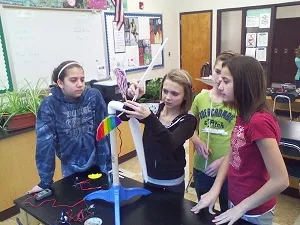
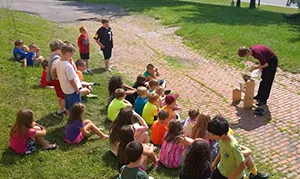
Hands-on learning is a major component of our educational outreach. Thanks to the support of the Pennsylvania Department of Environmental Protection, we are able to demonstrate electricity production from sources like solar, wind and hydro. Our KidWind kits allow students to create and test different blade and turbine designs to determine which are the best at generating electricity or lifting weights and our solar kits allow for solar resource assessment and experimentation with electricity. Also see our mobile power lab. Email energy@francis.edu or fill out the form below for details!
Resources
-
Energy Resources for Educators
- U.S. Energy Information Administration - Energy Kids For Teachers
- U.S. Department of Energy Office of Energy Efficiency & Renewable Energy - Education Homepage
- National Renewable Energy Laboratory - Education Programs
- PA Association of Environmental Educators - Environmental Education Resources
- KidWind Project & REcharge Labs - Curriculum, Training, Competitions, Materials
- The National Energy Education Development (NEED) Project - Curriculum Resources
-
Resources for Greening Your School
- U.S. Green Building Council - Leadership in Energy & Environmental Design (LEED)
- PA Department of Education - Pathways to Green Schools
- Penn State University- Wind for Schools
- U.S. Energy Information Administration - Energy Kids For Teachers
- U.S. Department of Energy Office of Energy Efficiency & Renewable Energy - Education Homepage
- National Renewable Energy Laboratory - Education Programs
- PA Association of Environmental Educators - Environmental Education Resources
- KidWind Project & REcharge Labs - Curriculum, Training, Competitions, Materials
- The National Energy Education Development (NEED) Project - Curriculum Resources
- U.S. Green Building Council - Leadership in Energy & Environmental Design (LEED)
- PA Department of Education - Pathways to Green Schools
- Penn State University- Wind for Schools
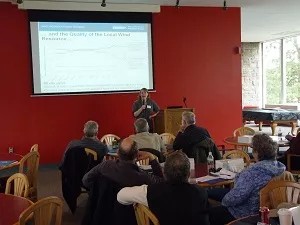
Presentations and Seminars
Institute staff deliver presentations to various audiences throughout Pennsylvania each year on topics such as wind farm development and renewable energy feasibility assessments. We occasionally host our own events and you may also find us exhibiting at farms, fairs, expos, and other community events.
Tours
To illustrate energy, we partner with area facilities to give individuals the opportunity to see energy in action. Cambria County, which calls itself the “Energy County,” features various energy sources producing valuable electricity, heat and fuel.
